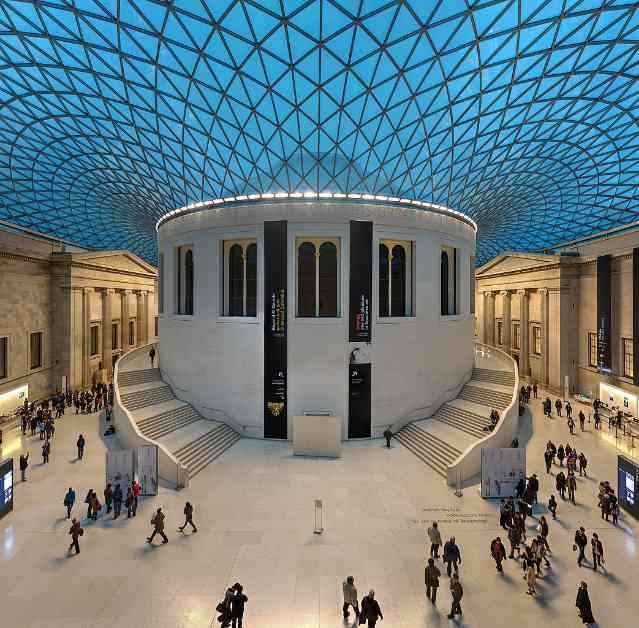The British Museum, a historical treasure trove located in London, has once again claimed the title of the most popular attraction in the UK for the year 2024. This prestigious accolade was bestowed upon the museum for the second consecutive year, solidifying its status as a must-visit destination for locals and tourists alike.
In a recent report released by Alva, the Association of Leading Visitor Attractions, it was revealed that the British Museum welcomed a staggering 6,479,952 visitors in 2024. This marked an impressive 11 percent increase in footfall compared to the previous year, highlighting the enduring appeal and allure of this cultural institution.
The Natural History Museum, situated in the charming neighborhood of South Kensington, secured the second spot on the list of most visited attractions in the UK for 2024. Drawing in 6.3 million visitors, the museum also experienced an 11 percent increase in attendance compared to the preceding year, showcasing the enduring popularity of London’s cultural offerings.
Surge in Cultural Exploration
The Tate Modern, renowned for its contemporary art collection, emerged as the fourth most visited attraction in the UK, with a notable 4.6 million visitors in 2024. Meanwhile, the Southbank Center, home to the esteemed Hayward Gallery among other venues, experienced a significant surge in visitors, recording more than 3.7 million footfalls—an impressive 17 percent increase compared to the previous year.
Alva’s report also shed light on the remarkable resurgence of other cultural institutions across the UK. The National Portrait Gallery witnessed a remarkable 36 percent increase in visitors, attracting over 1.5 million art enthusiasts after reopening its doors in the summer of 2023. This impressive feat propelled the museum to climb nine spots in the rankings, securing the 18th position.
The Young V&A, another cultural gem that reopened in June 2023, welcomed over 596,000 visitors—an impressive 47 percent increase in footfall. Additionally, iconic sites like Stonehenge experienced a 3 percent increase in visitors, with more than 1.36 million individuals exploring the ancient marvel in 2024.
Regional Highlights
In Scotland, the National Museum of Scotland emerged as the most visited free attraction, attracting 2.3 million visitors—a 6 percent increase from the previous year. The National Galleries of Scotland also celebrated a record-breaking year, with nearly 2 million visitors flocking to its hallowed halls, marking a significant 9 percent increase in attendance.
Moving to Wales, St. Fagan’s National Museum of History stole the spotlight as the most visited attraction, welcoming 600,690 visitors. The National Museum Cardiff followed closely behind, with 373,382 visitors exploring its cultural offerings.
Across the UK, other art institutions also reported a surge in attendance. The Fitzwilliam Museum, associated with the University of Cambridge, witnessed its busiest year on record, hosting over 506,000 visitors—an impressive 25 percent increase from the previous year. The Laing Art Gallery in Newcastle upon Tyne also experienced a substantial uptick, attracting more than 192,000 visitors, marking a notable 57 percent increase in footfall.
Bernard Donoghue, the director of Alva, acknowledged the challenges faced by the UK’s cultural sector in 2024. He attributed the modest growth in attendance to the lingering effects of the Covid pandemic, the impact of the cost-of-living crisis on consumer spending, and additional business expenses. Despite these challenges, Donoghue emphasized the resilience of visitors, who continued to prioritize experiences at beloved attractions, maintain memberships at cultural organizations, and cherish moments spent with loved ones in unique settings.
As the cultural landscape continues to evolve, the enduring popularity of iconic attractions like the British Museum serves as a testament to the timeless appeal of art, history, and heritage. In the face of adversity, the UK’s cultural institutions remain beacons of inspiration, inviting visitors to embark on enriching journeys of discovery and exploration.












